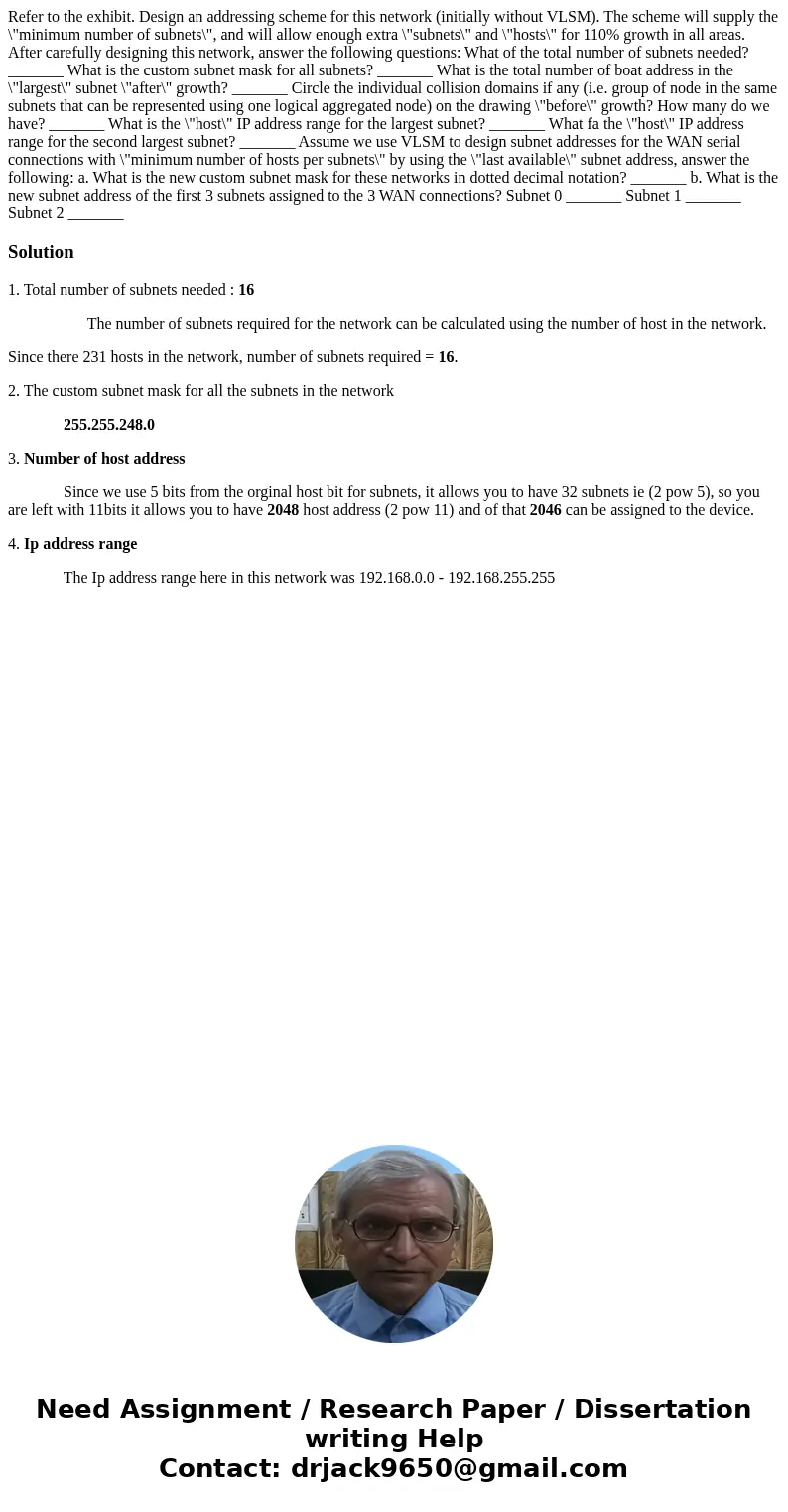Refer to the exhibit Design an addressing scheme for this ne
Refer to the exhibit. Design an addressing scheme for this network (initially without VLSM). The scheme will supply the \"minimum number of subnets\", and will allow enough extra \"subnets\" and \"hosts\" for 110% growth in all areas. After carefully designing this network, answer the following questions: What of the total number of subnets needed? _______ What is the custom subnet mask for all subnets? _______ What is the total number of boat address in the \"largest\" subnet \"after\" growth? _______ Circle the individual collision domains if any (i.e. group of node in the same subnets that can be represented using one logical aggregated node) on the drawing \"before\" growth? How many do we have? _______ What is the \"host\" IP address range for the largest subnet? _______ What fa the \"host\" IP address range for the second largest subnet? _______ Assume we use VLSM to design subnet addresses for the WAN serial connections with \"minimum number of hosts per subnets\" by using the \"last available\" subnet address, answer the following: a. What is the new custom subnet mask for these networks in dotted decimal notation? _______ b. What is the new subnet address of the first 3 subnets assigned to the 3 WAN connections? Subnet 0 _______ Subnet 1 _______ Subnet 2 _______
Solution
1. Total number of subnets needed : 16
The number of subnets required for the network can be calculated using the number of host in the network.
Since there 231 hosts in the network, number of subnets required = 16.
2. The custom subnet mask for all the subnets in the network
255.255.248.0
3. Number of host address
Since we use 5 bits from the orginal host bit for subnets, it allows you to have 32 subnets ie (2 pow 5), so you are left with 11bits it allows you to have 2048 host address (2 pow 11) and of that 2046 can be assigned to the device.
4. Ip address range
The Ip address range here in this network was 192.168.0.0 - 192.168.255.255

 Homework Sourse
Homework Sourse